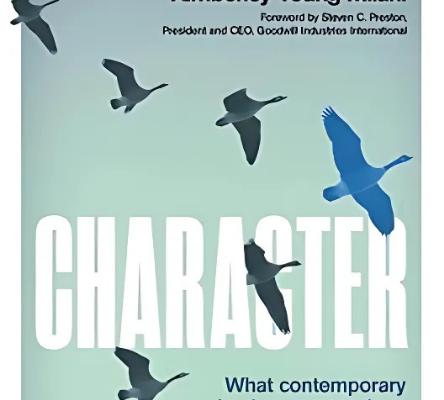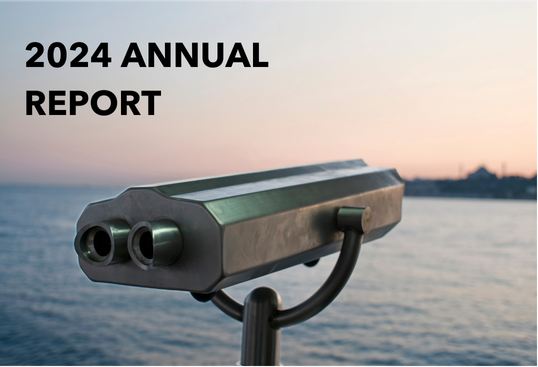In our blog dated April 29th, 2020 (http://talloakprivatewealth.com/light-at-the-end-of-the-quarantine-tunnel.aspx ), we explored the question of how long the quarantine tunnel is. We wrote that while there are reasons to be optimistic and the light at the end of the tunnel is visible, there are also challenges ahead. In considering the length of the tunnel, we also need to consider what life will look like on the other side.
In this blog we want to focus on this question and for that we turn to Dr. Michelle Gelfand, a renowned cross-cultural psychologist who has extensive research experience in behavioural trends across societies.
In this fascinating conversation with Raymond James analysts, Dr. Gelfand explores if and how, we as a society might return to normal.
Some key takeaways from this conversation:
FEELING SAFE IS A PREREQUISITE TO NORMALCY
Dr. Gelfand repeatedly emphasized the importance of psychology, social norms, and national leadership in fostering a widespread return to comfortability. She said that, in order to return to “normal” behavior, people will have to feel fully safe again. The perception of safety will depend on many factors, such as the consumption of positive messages from media, the emotional inclinations of different individuals, and the evidence of measures implemented to combat future traumatic events. Dr. Gelfand corroborated what we have stated for months; returning to normal will require widespread acceptance of the virus, as promoted by a change in social norms or leadership approaches, and/or a reduction of perceived threat, perhaps through the development of a vaccine or therapeutic.
IF PEOPLE FEEL SAFE, PEOPLE REBOUND MORE QUICKLY
Signaling safety encourages individuals to adopt more risk tolerance. If we as Americans feel secure to focus on returning to ideals, we will feel inclined to return to our prior, more carefree ways of life. Steps toward making people feel safer could include putting up barriers between cashiers and customers and taking temperatures of flyers at airport security lines.
THOSE IN LOWER SOCIOECONOMIC POSITIONS ARE MOST LIKELY TO RESPOND WITH CAUTION AND LIMIT DISCRETIONARY SPENDING OVER THE LONG TERM
Responses to the pandemic will be heterogeneous. Higher obstacles to social distancing seen in many lower-paying jobs as well as comorbidities that are more prevalent in lower socioeconomic groups have already caused disproportionate despair to people in lower socioeconomic positions. However, Dr. Gelfand said that this group will have a harder time rebounding psychologically, too, as these individuals tend to exercise higher degrees of risk aversion than their counterparts in higher social classes. As a result, people in lower socioeconomic strata are likely to reduce spending behaviors and prioritize personal savings for a long time following the dissipation of the crisis.
PEOPLE FOLLOW OTHER PEOPLE, SO COMMUNITY REENGAGEMENT WILL HELP PEOPLE REGAIN COMFORT
Societal trends drastically influence individual behavior. People often draw their own perceptions of ‘safety’ from the actions of their communities and influencers. Accordingly, if we can effectively reengage communities after the crisis diminishes, we can speed our recovery. Some recommendations that airlines and airports can take to help customers feel safe and speed up the recovery include implementing procedures that promote social distancing (as seen in Delta’s choice to block out middle seats), promote cleanliness (for example, flight attendants wearing gloves, more intensive disinfecting measures, and clear communication of these measures to customers) or taking temperatures before allowing passengers to pass security.
PEOPLE FEEL SAFER WHEN THEY HAVE CREDIBLE, CONSISTENT, AND AUTHORITATIVE DATA
Dr. Gelfand repeatedly stressed that, in order for people to feel secure, they must feel that the data they reference is reliable. Americans need credible information from credible sources; we need to be able to trust in our leadership, institutions, and scientists. A lot of uncertainty in recent weeks stems from ambiguity about who and what to trust. As our leaders grow more consistent and responsive in their recommendations, people will feel safer and more inclined to return to previous activities after we are over the curve.
THE MEDIA CAN HELP THE REBOUND BY PROMOTING POSITIVITY
Dr. Gelfand noted that people tend to focus and act on negative news. Given the overwhelming prevalence of negative and often contradictory messages in today’s media, a positive shift in the general tone of media would significantly improve individual and community feelings of safety across the board. In other words, the media should uplift Americans by highlighting how the difficult measures people are taking to stop the spread are tangibly working while encouraging continued vigilance in positive tones. Such reporting has two key benefits: listeners are more inclined to feel safer, and people are more encouraged to exercise creative innovation to further collaborate against the spread. Dr. Gelfand said that positivity in media will be key both in rebounding from this outbreak and responding to and rebounding from potential outbreaks down the line.
PEOPLE ARE QUICKER TO ADAPT TO THINGS THAN YOU MIGHT THINK
Despite Americans’ characteristic ‘do whatever we want’ attitude, we have effectively adapted to drastic constraints in everyday life very quickly. We have rapidly accepted and put into practice social distancing, hand washing, refraining from touching faces, and, in many localities, staying at home. Dr. Gelfand compared this shift to that which occurred during World War II, when Americans came together, rationed supplies, got creative, and unified to help one another. Such shifts demonstrate how quickly and powerfully cultures can adapt, particularly in light of threatening events.
THE PANDEMIC IS MOVING FROM A HEALTH PROBLEM TO A PSYCHOLOGICAL PROBLEM
The pandemic qualifies as a traumatic event, which is typically defined as any event that causes harm and challenges sense of safety on an individual and/or community-wide level. As individuals and communities struggle with fears and anxieties related to social isolation, economic strain, and the virus itself, the pandemic is becoming increasingly problematic to mental health. Dr. Gelfand cited some byproducts of this phenomenon, such as sleeping problems, increased aggression, alcohol and drug abuse, and grief. Further, she explained that these symptoms of psychological distress are contagious and that Americans are having a particularly difficult time coping because we strongly value our freedom and safety. While this is true, Dr. Gelfand explained that the tragedy also brings some degree of silver lining: traumatic events tend to inspire altruism, empathy, and creativity.
THE REBOUND WILL LIKELY TAKE LONGER THAN THE ‘TIGHTENING UP’ PERIOD, BUT IT WILL HAPPEN
Response curves to traumatic events typically appear asymmetric. Dr. Gelfand describes the transition that our country has undergone thus far as “tightening up”; people forsake a degree of liberty in exchange for security. Although this process has been rapid, the “loosening up” process tends to take a bit longer. Although it may take some time– perhaps eighteen months to two years– for people to feel the same level of comfort as they felt back in the good old days (pre-coronavirus times), we expect that it will happen. Since humans inherently crave belonging, it is unlikely that remote activities could ever substantially replace face-to-face interactions. Dr. Gelfand predicts that Zoom happy hours may remain a mode of connecting with long-distance family and friends, but business-as-usual should resume to normal when possible. Further, more crowded venues, such as concerts and sporting events, are also likely to resume post-pandemic, but may take longer to do so than more essential gatherings. Notably, in the event that the virus comes back for another wave after we return to normalcy, Dr. Gelfand predicts that Americans will return to the challenge with resiliency and speed up the processes of both tightening up to combat the threat and loosening once we regain safety and normalcy.
For full detailed call notes, please see attachment.
In managing portfolios, we not only have to consider the length of the tunnel but also what life might look like in a “new normal”. Insights like these help us form our investment thesis and reinforce our current thematic holdings within portfolios.
As always, we thank you for the trust you have placed in us to steward your portfolios. We continue to work hard on your behalf to ensure that we are managing your assets through these challenging times.
We welcome you to reach out to us to discuss how this impacts your personal portfolios as we remain just a phone call away.
The views expressed in this commentary are those of Tall Oak Capital Advisors as at the date of publication and are subject to change without notice. This commentary is presented only as a general source of information and is not intended as a solicitation to buy or sell specific investments, nor is it intended to provide tax or legal advice. Statistics, factual data and other information are from sources Tall Oak believes to be reliable but their accuracy cannot be guaranteed. This commentary is intended for distribution only in those jurisdictions where Tall Oak Capital Advisors are registered. Securities-related products and services are offered through Raymond James Correspondent Services Ltd., member Canadian Investor Protection Fund. Insurance products and services are offered through Gryphin Advantage Inc., which is not a member-Canadian Investor Protection Fund. This commentary may provide links to other Internet sites for the convenience of users. Tall Oak Capital Advisors is not responsible for the availability or content of these external sites, nor does Tall Oak Capital Advisors endorse, warrant or guarantee the products, services or information described or offered at these other Internet sites. Users cannot assume that the external sites will abide by the same Privacy Policy which Tall Oak Capital Advisors adheres to.




